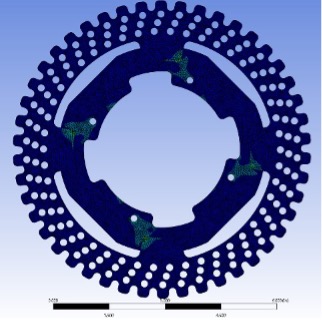
Purdue FSAE — Braking Components
As a subsystem owner for the Purdue Formula SAE team in 2023-24, I designed, analyzed, manufactured, and iterated braking components, a system which encompasses the brake rotors and retainers for the front and rear of the vehicle. Although I largely discuss my own contributions on this page, it was by no means a solo effort, and I am extremely thankful for those who helped me in this process.
Thanks to the efforts of the dozens of Purdue students on our team, we placed 8th overall at the Michigan SAE competition in May of 2024, as well as claiming 1st in skidpad, 8th in business, and 10th in endurance.









